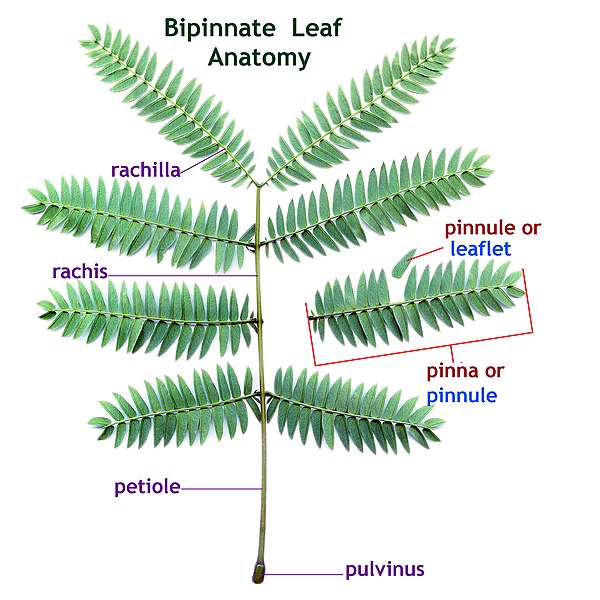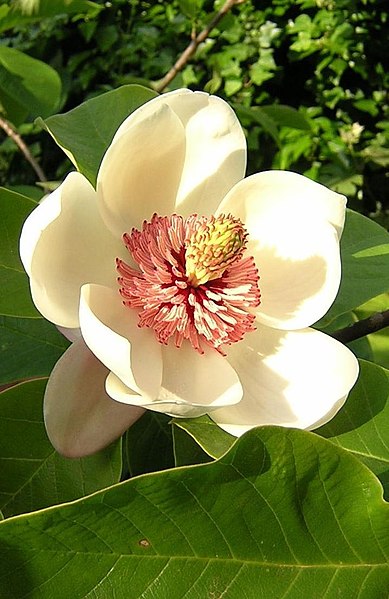Glossary of leaf morphology
The following terms are used to describe leaf morphology in the description and taxonomy of plants. Leaves may be simple or compound. The edge of the leaf may be regular or irregular, may be smooth or bearing hair, bristles or spines. For more terms describing other aspects of leaves besides their overall morphology see the leaf article.
Bipinnate leaf anatomy with labels showing alternative usages
Oddly pinnate, pinnatifid leaves (Coriandrum sativum, coriander or cilantro)
Partial chlorosis revealing palmate venation in simple leaves of Hibiscus mutabilis
Image: Peperomia dolabriformis
A tepal is one of the outer parts of a flower. The term is used when these parts cannot easily be classified as either sepals or petals. This may be because the parts of the perianth are undifferentiated, as in Magnolia, or because, although it is possible to distinguish an outer whorl of sepals from an inner whorl of petals, the sepals and petals have similar appearance to one another. The term was first proposed by Augustin Pyramus de Candolle in 1827 and was constructed by analogy with the terms "petal" and "sepal".
A Lilium flower showing the six tepals: the outer three are sepals and the inner three are petals.
Flowers of Magnolia × alba showing tepals in various stages of development
Tepals of Magnolia × wieseneri
A hellebore flower showing the petaloid sepals








